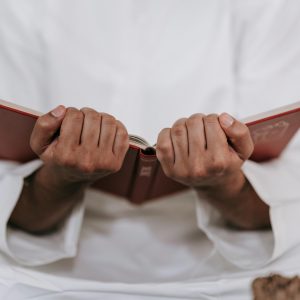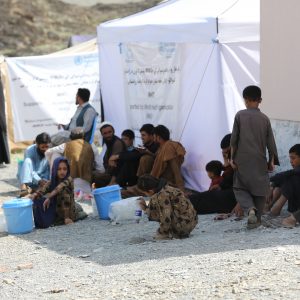Hajj pilgrims ‘stone the devil’ as Muslims mark Eid al-Adha
Mina, Saudi Arabia – AFP
Pilgrims performed Sunday the last major ritual of the hajj, the “stoning of the devil”, in western Saudi Arabia, as Muslims the world over celebrated the Eid al-Adha holiday.
Beginning at dawn, the 1.8 million Muslims undertaking the pilgrimage this year threw seven stones at each of three concrete walls symbolising the devil in the Mina valley, located outside Mecca, the holiest city in Islam.
The ritual commemorates Abraham’s stoning of the devil at the three spots where it is said Satan tried to dissuade him from obeying God’s order to sacrifice his son.
The stoning ritual has been witness to multiple stampedes over the years, most recently in 2015 when up to 2,300 worshippers died in the worst hajj disaster.
The site has been revamped since then to streamline the movement of the large crowds.
Roads leading to the concrete walls were nevertheless packed early Sunday, with some pilgrims visibly struggling under the morning sun.
Some sat on the side of the road to rest and drink water, while others stretched out on the ground, apparently exhausted.
On Saturday, temperatures reached 46 degrees Celsius (114.8 degrees Fahrenheit) in Arafat, where pilgrims performed hours of outdoor prayers.
One treatment centre in the area recorded 225 cases of heat stress and fatigue, the official Saudi Press Agency reported.
Last year more than 10,000 cases of heat-related illnesses were documented during the hajj, 10 percent of which were heat stroke, a health ministry spokesman told AFP.
“It was very, very hot,” Rohy Daiseca, a 60-year-old Gambian living in the United States, told AFP on Saturday night as pilgrims collected stones to throw.
“Alhamdulillah (praise be to God), I put a lot of water on my head and it was OK.”
Worshippers have tried to take the gruelling conditions in stride, seizing what for many is a once-in-a-lifetime chance to pray at Islam’s holiest mosques.
“I am so happy that I can’t describe my feelings,” said Amal Mahrouss, a 55-year-old woman from Egypt.
“This place shows us that we are all equal, that there are no differences between Muslims around the world.”
One of the five pillars of Islam, the hajj must be performed at least once by all Muslims with the means.
This year’s figure of 1.8 million pilgrims is similar to last year’s, and Saudi authorities said on Saturday that 1.6 million of them came from abroad.
– Feast of the sacrifice –
The stoning ritual coincides with Eid al-Adha, or the feast of the sacrifice, which honours Abraham’s willingness to sacrifice his son before God offered a sheep instead.
Worshippers typically slaughter a sheep and offer part of the meat to the needy.
This year’s hajj and Eid al-Adha holiday have been clouded by Israel’s war on Gaza.
“We don’t feel the Eid holiday because our brothers in Gaza are oppressed under the (Israeli) occupation,” said Najem Nawwar, a 43-year-old Egyptian pilgrim.
King Salman invited 2,000 Palestinians to the hajj at his own expense including relatives of Gazans who have sought refuge elsewhere.
But Saudi authorities have warned no political slogans would be tolerated during the pilgrimage.
That has not stopped many worshippers from voicing solidarity with Palestinians.
“We pray for them… and for the liberation of Palestine, so that we have two holidays instead of one,” said Wadih Ali Khalifah, a 32-year-old Saudi pilgrim.
In a message to hajj pilgrims on Saturday, Iranian supreme leader Ayatollah Ali Khamenei said “the ironclad resistance of Palestine and the patient, oppressed people of Gaza… must be fully supported in every way”.












